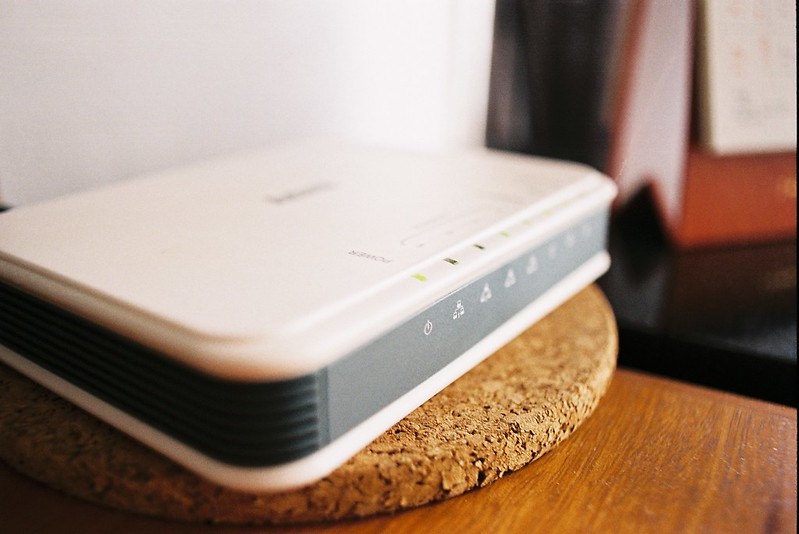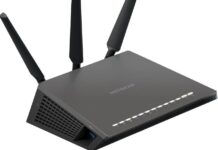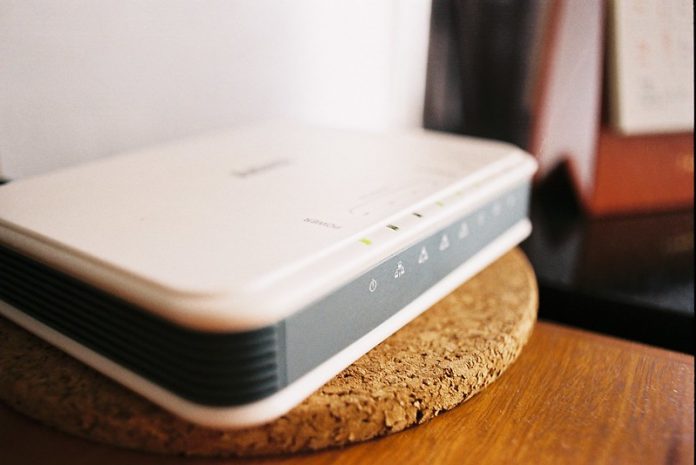Do you hate going back and forth between your computer and router whenever you want to connect? Or do you wish there was a way to eliminate the hassle?

It’s not rocket science, but it requires some basic networking knowledge. This post will look at connecting a modem to a router using an ethernet cable. This method works great for connecting laptops, tablets, smartphones, etc., to a broadband connection. I will explain everything from scratch, including why you want to use this method over others.
What’s the difference between a modem and a router?
A modem connects you to the Internet. A router acts like a gateway for connecting multiple computers into one network. Both are essential parts of getting online. But there’s a big difference between them.
Here’s how to tell the difference.
The most basic definition of a modem is “a device that allows communication over telephone lines.” You plug it into your computer and use it to connect to the Internet. Modems usually come with a built-in phone jack, allowing you to make calls over the same connection used for data transfer.
Routers are different because they’re explicitly designed to route traffic among multiple networks. They don’t just connect one device to the Internet; they connect several. Routers work by examining packets of information travelling across the Internet. If a package contains a destination address matching a router’s configuration settings, the router forwards the box to the appropriate port (the number assigned to each device).
Modems and routers both have public IP addresses. Public IP addresses are unique identifiers for individual devices on the Internet. When you access the web, your browser sends out a request looking for specific files called URLs. This request includes your public IP address. Your ISP assigns you a dynamic IP address based on where you live. So even though you might be accessing the exact URL from your office and home, your two public IP addresses could be different.
Both modems and routers assign local IP addresses to each connected device. Local IP addresses are unique within a single network. For example, your laptop has a local IP address of 192.168.1.10. Every device connected to your router must also have a local IP address. Each instrument gets a different one.
You’ll notice that many people refer to modems and routers interchangeably. Some companies sell both products under the same name. There’s no reason why you couldn’t buy a modem that also serves as a router. However, modems and routers serve very different purposes.
Related:
Connecting Your Wi-Fi Router to Modem
A wireless router is the most common way to provide internet access throughout a home. Its built-in antennas can reach farther distances than a typical wired Ethernet connection. While it’s easy to use, there are some things to consider before buying one.
You’ll first want to determine whether you’re looking for a standalone router or a combination modem/router. You probably don’t need a separate router if you already have a DSL or cable modem. But if you’re getting a new modem, you’ll likely need a router.
You’ll need a dual-band router if you’re planning on connecting multiple devices to your network, such as a laptop, smartphone, tablet, gaming console, smart TV, etc… This type of device provides both 2.4GHz and 5GHz bands, allowing it to communicate with different types of devices simultaneously. It would help if you didn’t buy a single-band router unless you know what you’re doing.
Next, you’ll need to decide which brand of router you’d prefer. Many options include Linksys, Netgear, D-Link, TP-LINK, and others. Each offers something unique, so take note of the features you’re interested in and compare models based on those criteria.
Once you’ve narrowed down your choices, check the price. Many manufacturers offer bundles where you can purchase a router and a broadband package. These usually include free installation and setup, making adding another device to your network more accessible.
You’ll also want to make sure you understand how each model works. Some routers require no configuration, while others allow you to customise settings. Make sure you know exactly what you’re doing before installing a router.
Finally, once you’ve selected a router, follow the instructions to install the software needed to configure it. Most routers come with a web browser interface, though some support remote control via mobile apps.
STEP 1: Install the Modem
To set up your modem, you must install it. To do so, take the coaxial cable and connect one end to the wall jack and the other to the modem. Then, please turn on the modem and wait for about 30 seconds while it relates to the Internet. You might hear a few sounds, such as clicking noises, during the process. If you don’t hear anything, try again. If you are having trouble connecting, check out customer support.
STEP 2: Plug the Router into the Modem
If you’re setting up a home network, there are some basic steps you’ll want to follow. First, make sure your modem and router are plugged into power outlets. Next, connect the LAN cables. Finally, plug one end of each LAN cable into the modem and the other end into the corresponding port on the router. This step is essential because the router needs to know where to send data packets from the modem. If you don’t do this correctly, your computer won’t be able to access anything beyond your local area network (LAN).
STEP 3: Power On the Router
Plug the router into the wall socket and wait for it to turn on. If you see the light blink, the router is working fine. However, suppose the router restarts every five seconds. This could mean problems with the firmware, hardware, or software installed on the device. You can also try resetting the router.
STEP 4: Connect Your Wireless Devices
Your home network is now set up! Congratulations! If you’re still having trouble getting your computer, phone, tablet, TV, etc., to connect to the Internet.





































